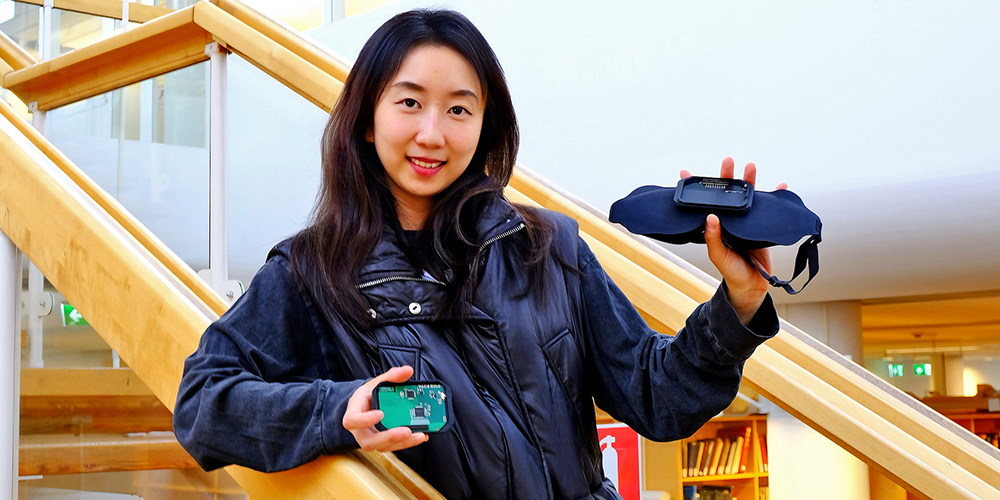Hello there Wicky Qin, designer of an award winning sleep mask

You have designed a sleeping mask that may improve the quality of sleep by connecting brain signals with light and sound functions. Now the product has been named this year's national winner of the prestigious James Dyson Award!
“I'm delighted that the development team and I have the opportunity to take a big step in the development of our sleep mask that can help people with sleep disorders. The technology is developed by our start-up company NeuralEcho, which consists of me and three other KTH students and PhD students from Sweden, China and Japan.”
How did you come up with the idea for the sleep mask?
“Several people in our team experienced sleep problems during the pandemic. This inspired us to explore how brain-computer interface technology can be used to monitor and improve sleep quality, to help people suffering from poor sleep.”

How was the technology developed?
“We interviewed and received feedback from 189 participants about their perceived sleep disturbances. By adapting the technology to the descriptions of, for example, difficulty falling asleep and poor sleep, we developed this product, which will now be tested and further developed.”
How would you describe the sleep mask?
“The product is a lightweight, portable device with a computer tablet embedded in front of the user's forehead. The electronics monitor brain activity at night. Based on accurate data analysis, it then performs personalised actions and sleep interventions, based on light and sound signals.”
The product is called BEKVÄM (which means comfortable in Swedish) but can it be perceived as uncomfortable, for example if you are used to sleeping on your side?
“We have prioritised user comfort. The whole mask is soft, it doesn't matter how you sleep on the pillow, it should not feel disturbing to the user.”
There are similar smart sleeping masks on the market, what makes this one unique?
“Our product is unique in that it combines light and sound technology to support the user throughout the sleep cycle: from providing pre-sleep guidance, to assisting with falling asleep, to enhancing sleep quality during the night. The wake-up methods are also important for the sleep experience, and specifically tailored to the needs of the individual.
When do you hope to bring the product to market?
“The plan is to contact KTH Innovation for advice and support through collaboration with their business development coaches. We are looking forward to further research and user testing, and evaluating how our combination of light and sound can further improve sleep quality.
As this year's national winner in Sweden, Wicky Qin's team's innovation will go forward to the international final of the James Dyson Award on 15 November.
Text: Katarina Ahlfort
Photo: Xiaoman Chu
